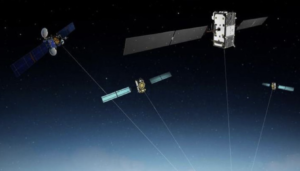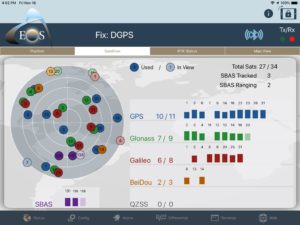The U.S. Federal Communications Commission (FCC), at a meeting on November 15, granted in part a request from the European Commission for a waiver of the FCC rules so that devices in the United States may access specific signals transmitted from the Galileo Global Navigation Satellite System.
Following this decision, consumers and industry in the U.S. will be permitted to access certain satellite signals from the Galileo system to be used in combination with the U.S. Global Positioning System (GPS), allowing them to benefit from improved availability, reliability, and resiliency of these position, navigation, and timing services, the FCC said in a statement.
“This breakthrough serves the public interest across many areas of our economy, including the automotive, aviation, rail, maritime, and agriculture industries. It will also produce public safety benefits by reducing risks of accidents and disaster, aiding emergency response, and synchronising power grids and critical infrastructure,” FCC Chairman Ajit Pai said.
The FCC noted that Galileo is uniquely situated as a foreign GNSS system with respect to GPS, since the two systems are interoperable and radiofrequency compatible following the 2004 European Union/United States Galileo-GPS Agreement.
“This is an important milestone for Galileo. This ruling means that individual users and industry in the U.S. are now able to benefit from the high accuracy that Galileo brings, it also means that Galileo’s position as a truly global navigation system has been strengthened,” European GNSS Agency (GSA) Executive Director Carlo des Dorides said.
Improved U.S. consumer experience
Specifically, the FCC ruling permits access to two Galileo signals on two different Galileo Frequency Bands:
- The E1 signal that is transmitted in the 1559-1591 MHz portion of the 1559-1610 MHz Radio-navigation-Satellite Service (RNSS) frequency band
- The E5 signal that is transmitted in the 1164-1219 MHz portion of the 1164-1215 MHz and 1215-1240 MHz RNSS bands. These are the same RNSS bands in which GPS satellite signals operate.
“Adding these new signal streams should only improve the U.S. consumer experience without causing any downsides,” FCC Commissioner Michael O’Reilly said.
The Order does not grant access to the Galileo E6 signal, which is transmitted over the 1260-1300 MHz frequency band, since this band is not allocated for RNSS in the United States or used by the U.S. GPS to provide PNT services. The FCC noted that granting access to the Galileo E6 signal could constrain U.S. spectrum management in the future in spectrum above 1300 MHz, where potential allocation changes are under consideration.
Proof of the reception of Galileo signals in U.S., on 17 November, from our colleague Eric Gakstatter (@GPSGIS_Eric):


